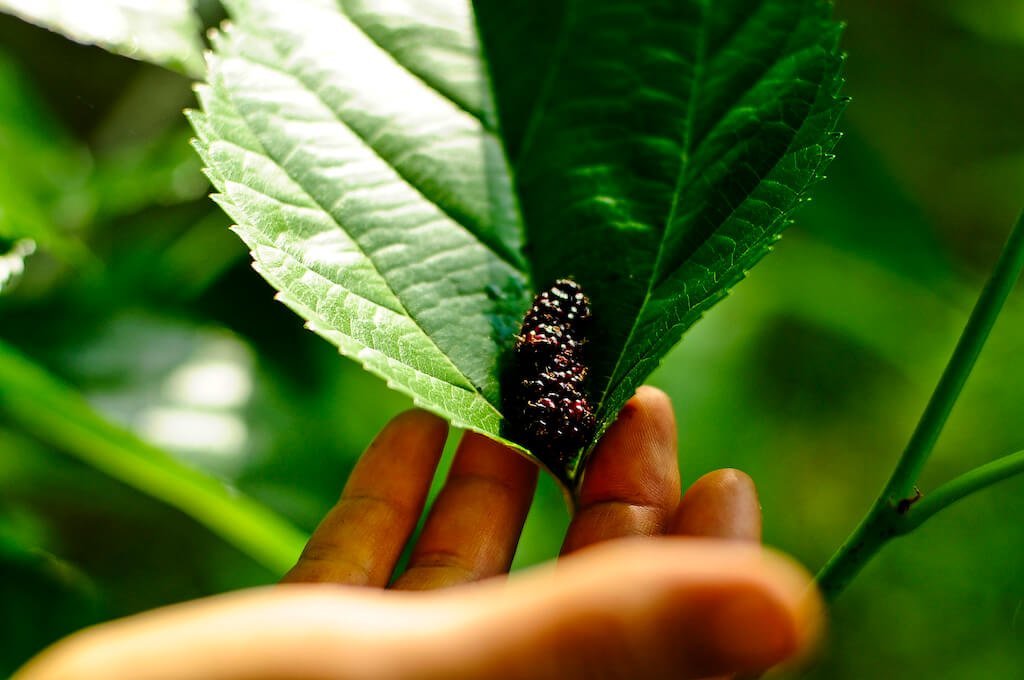

Whether you have a small suburban backyard or a large farm, we strongly recommend that you plant at least one mulberry tree. Mulberries are best known for their sweet-tart fruit, which is one of our favorites both fresh and dried.
They are wonderful in other ways, too. In fact, the leaves are excellent animal fodder, with a protein content at about 20% of dry matter (FAO 1998). That’s on par with alfalfa! Additionally, mulberry wood is fairly durable and rot-resistant. It’s often used to make lathe-turned bowls that have a beautiful yellow hue. Mulberry trees grow fast and aren’t too picky about the soil that they inhabit. One species of mulberry tree is native to North America, and a few others have naturalized here. There are lots of reasons to love them!
These fast-growing trees provide food, shelter, and shade, and they can be integrated into a wide range of landscapes. Whether you want to support wildlife, feed livestock, enjoy homegrown berries, or cultivate resilient fruit trees, mulberries offer something valuable.
Mulberry Tree Botanical Classification
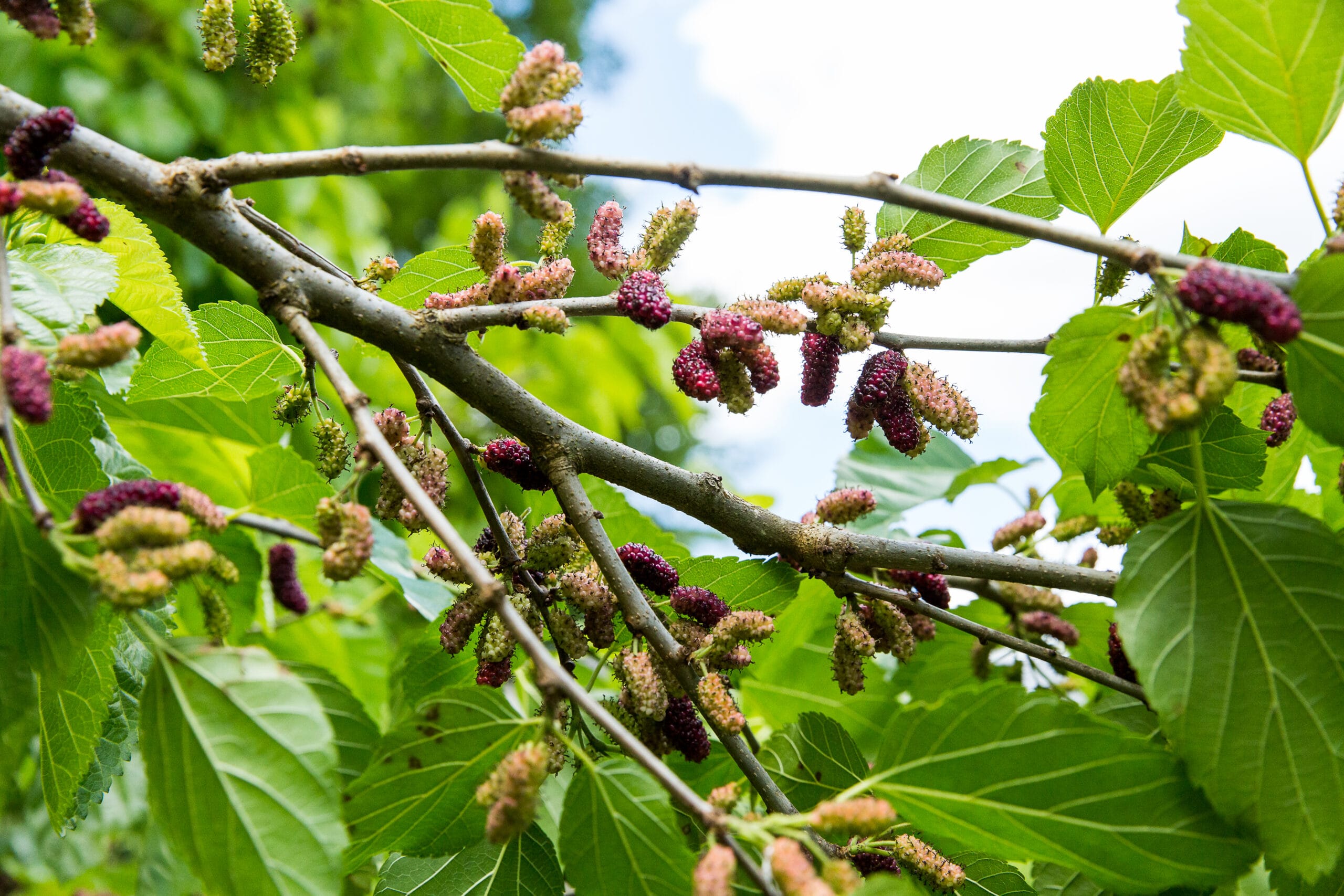

Family: Moraceae
Other fruit-bearing trees in this family are figs (Ficus carica spp.), breadfruit and jackfruit (Artocarpus spp.) and African breadfruit (Treculia spp.)
Botanical name: Morus rubra,
M. alba, M. nigra
There are several other species, too (68 in total), but these three are the most common. It’s likely that M. rubra, which is native to North America, and M. alba, which was introduced to feed silkworms, have naturally hybridized here. Both M. rubra and M. alba can be found growing wild and feral in the Eastern United States. Please note, M. alba is considered an invasive species (it’s originally from China). Since so many M. alba trees have become feral, it’s unclear whether choosing not to plant a cultivar of that species will have a significant impact on its spread as an invasive.
Type of fruit: Multiple or collective fruit, “infructescence”
What we think of as a mulberry “berry” is actually an infructescence — that is, a collection of many tiny fruits joined together. When the mulberry tree flowers, each “flower” is actually an inflorescence, or collection of many tiny flowers. Get out your loupe hand lens, and check it out!
Mulberry trees are typically medium to large deciduous trees with broad, heart-shaped leaves. Some varieties have lobed leaves that may resemble those of a fig or even a maple tree. Despite the children’s rhyme about a “mulberry bush,” mulberries are, in fact, trees. The confusion likely stems from small cultivars or heavy pruning that keeps the tree small and bushy.
Mulberry Nutrition
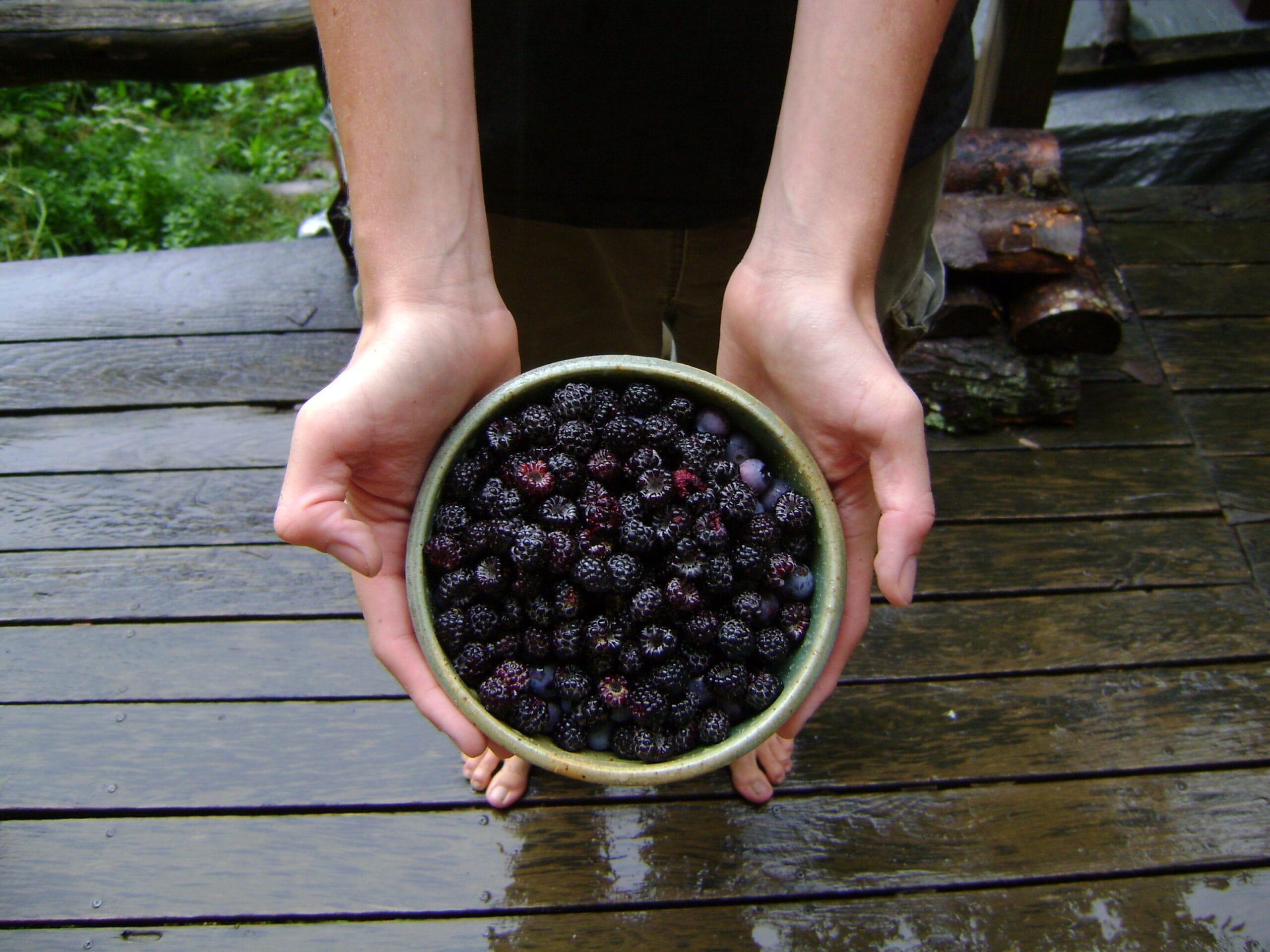

Mulberries are nutritional powerhouses. They are rich in fiber (including pectin), vitamin C, iron, and vitamin K. For a fruit, mulberries are pretty high in protein, with a cup of them containing about 2 grams of protein. They are also a significant source of calcium, magnesium, and several other trace minerals.
Along with being full of nutrition, mulberries contain some important health-promoting qualities. They are full of antioxidants (even the white-fruited varieties), which help protect our bodies from oxidative stress that can lead to cancer and other diseases. In fact, an isolated compound found in mulberry juice was shown in a 2017 research study to help kill breast cancer cells. According to another study, one of the pigments in mulberries helps to control “bad” (LDL) cholesterol in the body.
If you’re wondering whether mulberries are edible—they absolutely are! All mulberry species produce edible fruit, although the flavor and texture may vary. White mulberries, despite their paler color, are perfectly safe to eat and tend to be the sweetest. Some people even dry and snack on them like raisins.
Mulberry Tree Cultivation Tips
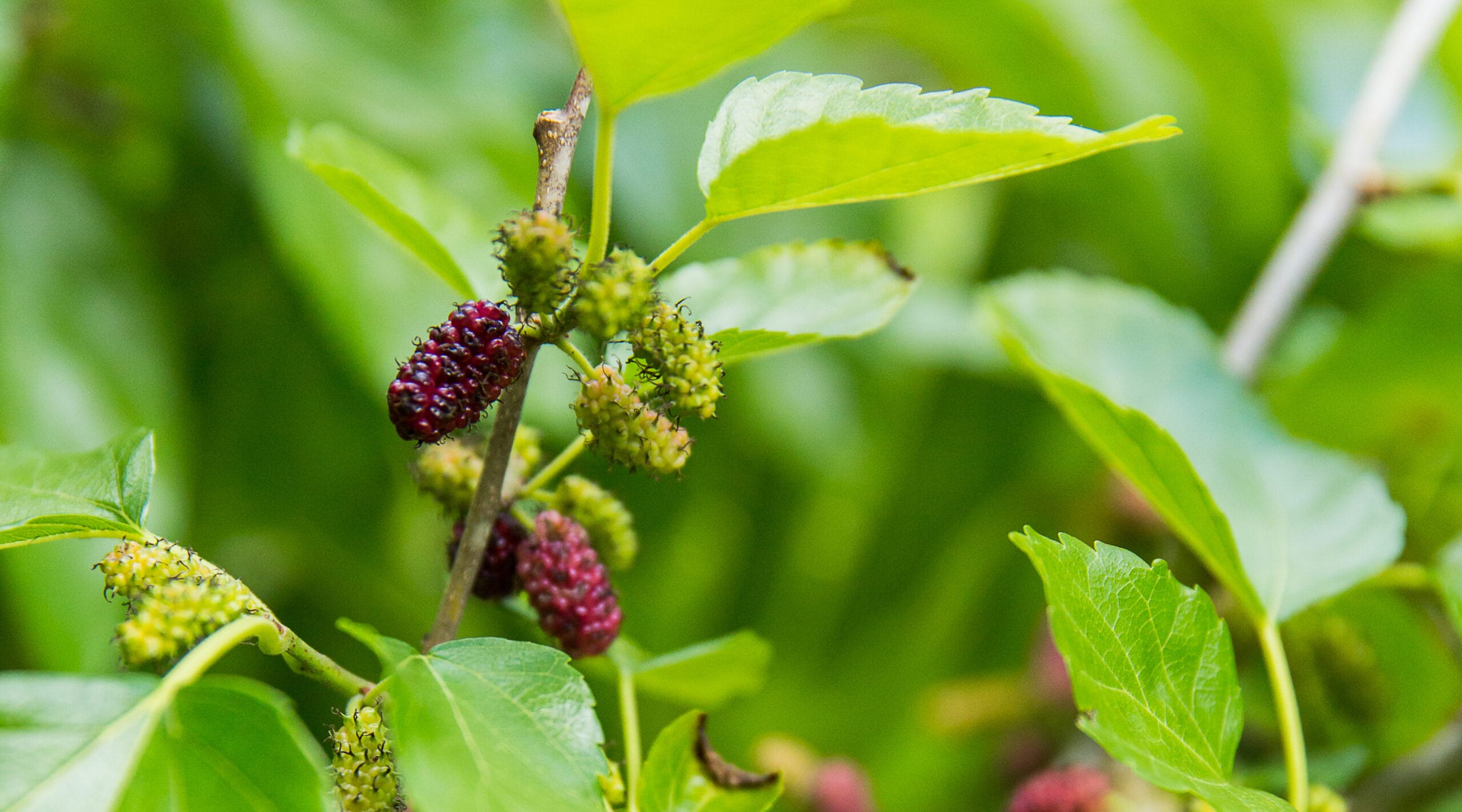

As far as fruit trees go, mulberries are pretty forgiving and adaptable. They thrive in full sun, with at least 15 feet of space between individual trees. They can survive in many different kinds of soil, but prefer loose, well-drained soil. Many mulberry tree varieties are somewhat drought- and frost-tolerant. White and red mulberries (M. alba and M. rubra) are much hardier and less finicky than black mulberries (M. nigra). It is said that the fruit of black mulberries are the most delicious. Because they don’t thrive in our climate, we can’t say for sure.
It’s worth noting that “white” mulberry trees don’t necessarily bear white fruits, “red” mulberry trees don’t necessarily bear red fruits, and “black” mulberry trees don’t necessarily bear black fruits. All species can bear fruits that range in color from white to dark purple-black. The white fruits are sweetest, but don’t have much tartness to enrich the flavor. The best tasting mulberries that we’ve tried have been red to purple-black.
Mulberry trees can grow quite large—red mulberries may reach up to 70 feet tall, while white mulberries typically stay under 40 feet. They grow quickly, making them excellent choices for anyone who wants fruit and shade fast. As long as they get full sun and enough space, they’re relatively low-maintenance. If you’re wondering how to grow mulberry successfully, it starts with choosing the right variety for your climate and giving it plenty of light.


To learn about berry cultivation, including raspberries, blackberries, blueberries, and strawberries, join us for the Online Gardening School (we teach about all kinds of vegetables, too!)
Mulberry Habitat and Planting
Mulberry trees can be found growing wild and feral. Often trees growing in the understory of a forest don’t much fruit because they don’t get much sun. Sometimes thinning the forest around a wild or feral mulberry tree can open up the canopy, bringing more sun to a tree and resulting in a crop of sweet fruit. Wild trees bearing poor-quality fruit can be grafted with tastier varieties to take advantage of the established root system.
Pruning is not necessary with mulberry trees, except to clean up dead limbs or control the size and spread of the tree. Some red mulberries can grow to be 70 feet tall! Flowers bloom from first-year growth and from the axils of older wood. Mulberry trees drop their fruit over a period of several weeks. The darker-fruited varieties in particular can make quite a mess. Try not to plant a mulberry tree close to a road or sidewalk or over a place where you park a car to avoid purple stains where they’re unwanted.
If you want to propagate a mulberry tree, consider rooting hardwood cuttings during dormancy or grafting preferred varieties onto wild rootstock. While mulberries can grow from seed, this method doesn’t guarantee good fruit. Mulberry bushes or small trees can also be espaliered or pruned to maintain a compact size, ideal for urban or suburban gardens.
Harvesting Mulberries
Harvest season: Late May or early June
Method of harvest: Ripe mulberries drop from the tree. This can be encouraged by shaking a mulberry tree. To prevent your bounty from being contaminated with rotten fruits, twigs, rocks, and other flotsam, we recommend laying a tarp down beneath the tree, then shaking it. Individual mulberries can, of course, be plucked from low-hanging branches for a snack. The tarp-shake method is best for bringing in a large quantity of fruit for processing.
If you’re wondering when do mulberries ripen, the answer is late spring to early summer, though this can vary based on variety and climate. In most places, mulberries are in season for only a few weeks, so be ready to harvest quickly!
Processing and Preserving Mulberries
Our favorite way to preserve mulberries is also one of the easiest: drying. Dried mulberries are a delicious snack, and they keep very well in sealed containers. We have found that using an electric dehydrator works the best, as mulberries are very juicy. Solar dehydrators in this humid climate can work, if an auxiliary fan is attached to them to increase their drying power. If mulberries aren’t completely dry when stored, they will mold.
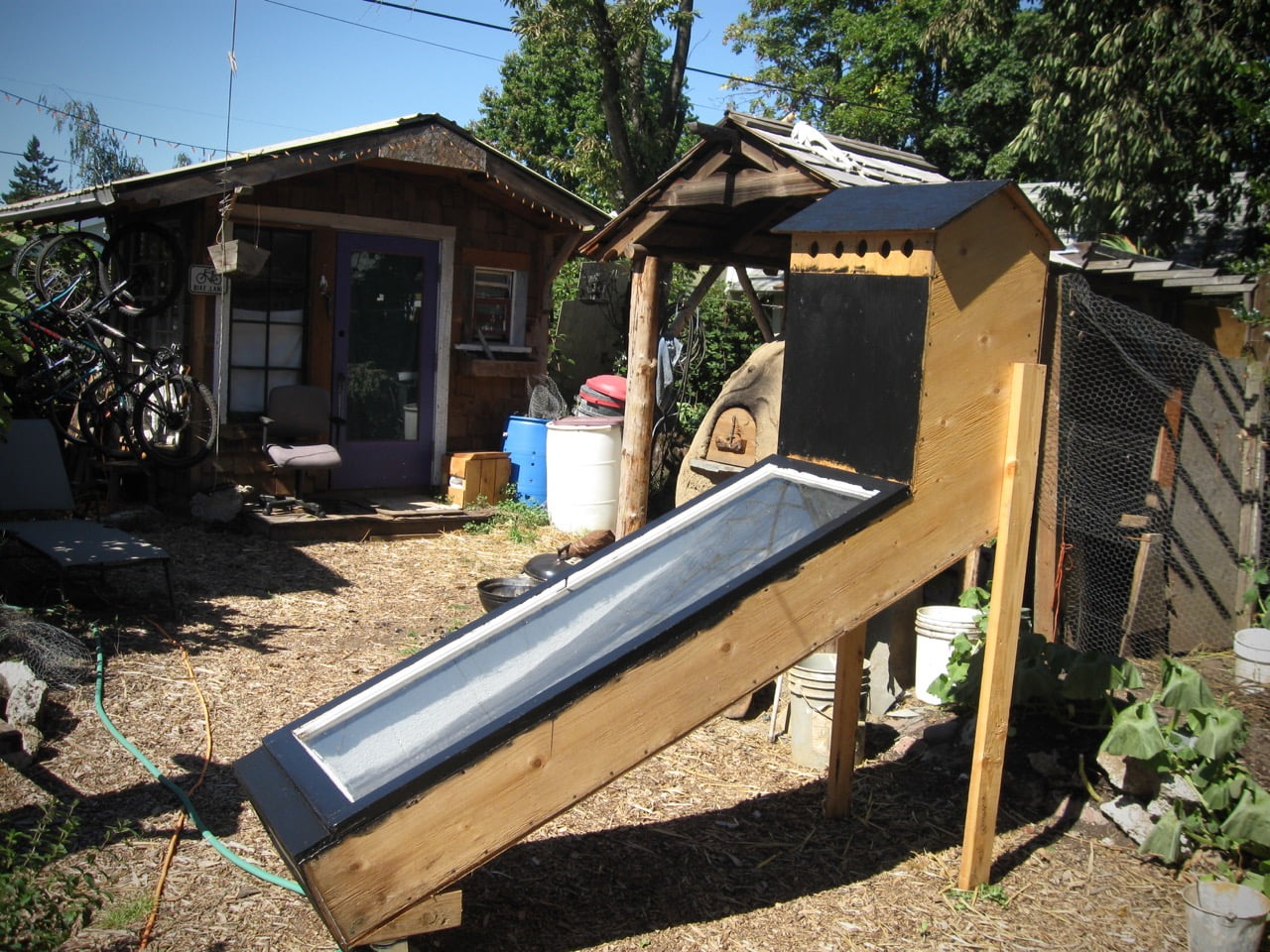

Mulberries make a good wine and don’t require as much additional honey or sugar as other fruit wines, because the fruit is so sweet. Unfortunately the mulberry flavor is so subtle that it doesn’t come across very strongly in a wine. It can be fun to experiment with mulberry wines that also contain other, stronger-flavored fruits like elderberries, blueberries, blackberries and wild grapes.
Freezing mulberries is another great way to preserve them. When defrosted, the frozen berries are more like a paste and are best used in smoothies, sauces and pie fillings. They cannot be easily eaten out of hand after freezing.
Because of their high pectin content, mulberries lend themselves to making jams, jellies, and other preserves. The pectin helps the preserves solidify, similar to how gelatin becomes more solid at room temperature after it’s been cooked. If you have an abundance of fresh mulberries and enjoy fruity spreads, canning up a batch of mulberry jam is a great way to preserve the harvest.
Mulberry Trees and “Silk Mania”
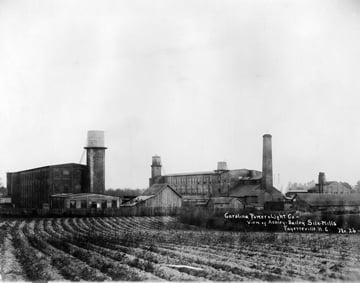

The Ashley Bailey Silk Mills, Fayatteville, NC circa 1910
Perhaps the most famous use for mulberry trees is in the feeding of silkworms. These silky-cocoon spinning caterpillars almost exclusively eat mulberry leaves, preferring M. alba. In the late 1800s and early 1900s here in North Carolina (and other Eastern states), “silk mania” took hold. Entrepreneurs and farmers learned of the high per-pound price that silk was fetching and the fact that M. alba could be cultivated here; they went crazy planting mulberry trees and raising silkworms. Unfortunately, their lack of preparation, knowledge and skill in the processing of cocoons into silk fiber, among other factors, led to a speedy demise of the North Carolina silk industry. Fortunately for us, the legacy of “silk mania” is an abundance of feral M. alba mulberry trees and the likely hybridization between M. alba and our native M. rubra.
Interestingly, some cities and states once considered banning or heavily regulating mulberry trees due to pollen allergies and the invasiveness of M. alba, leading to some confusion now about why mulberry trees were once almost illegal. In most cases, these restrictions have softened or been repealed.
Where to buy mulberry trees?
For a list of nursery’s that sell mulberry trees visit GrowingMulberry.org (there’s lots of other good info there, too)
If you’re local, our friend and neighbor Cailen Campbell maintains a small nursery with a substantial collection of common, rare, and unusual mulberry varieties. You can contact him at cailencampbell@hotmail.com
As a bonus, mulberry wood can be valuable to woodworkers and artisans due to its golden color and rot resistance. While it doesn’t sell commercially for large sums, its worth lies in its durability and beauty. And mulberry trees, with proper care, can live for decades—some up to 100 years or more!
Are Mulberries Poisonous?
Mulberries are not poisonous—in fact, they’re quite the opposite. They are nutritious, safe, and widely enjoyed. That said, unripe mulberries can sometimes cause mild digestive discomfort if eaten in large quantities. Also, avoid confusing them with lookalike berries like pokeweed, which are toxic. As long as you’re sure it’s a mulberry and it’s ripe, you’re in good hands.
It’s also worth noting that the leaves and stems of mulberry trees are not typically consumed by humans, although they are eaten by livestock and silkworms. If you’re harvesting wild mulberries, always identify the tree by its leaf shape and fruit structure to ensure safety. Children, in particular, should be taught to avoid unripe fruit and unknown plants.
How to Prune a Mulberry Tree
Mulberries are low-maintenance, but proper pruning can enhance fruit production and manage tree size. Prune in winter during dormancy to remove dead or crossing branches and to shape the canopy. If you want to keep your mulberry smaller and more bush-like, annual light pruning can help. For a full pruning guide, check out our post on how to prune a fruit tree.
When pruning older trees, focus on thinning the center to allow more sunlight and air to penetrate, which improves both fruit quality and disease resistance. Avoid heavy summer pruning, as it may reduce next year’s yield. Always use clean, sharp tools and make angled cuts just above a bud or branch collar for best results.
Mulberry Tree Lifespan and Growth Rate
Mulberry trees are known for their fast growth—some varieties can shoot up several feet in a single season. Red mulberries can reach 70 feet tall, while white mulberries tend to stay under 40 feet. With the right care, mulberry trees can live 50 to 100 years or more, making them a long-term investment in your homestead or garden.
Because of their rapid growth, mulberries can provide shade and habitat faster than many other fruit trees. Their vigorous root systems also help stabilize soil on slopes or erosion-prone areas. If you’re looking for a resilient tree with multi-generational value, a mulberry is a worthy contender.
Mulberry Tree Identification Guide
Mulberry trees have distinctive, often glossy leaves that can vary even on the same tree—some are unlobed and heart-shaped, while others have deep lobes. The bark is light brown to gray and develops ridges as the tree matures. Their berries, which resemble elongated blackberries, ripen in late spring or early summer. You’ll often spot them in old homesteads, fence lines, and wood edges.
During flowering season, look for tiny greenish catkins that later develop into the berry-like infructescences. Leaves are alternately arranged and rough to the touch on the upper surface. Learning to recognize the tree even when it’s not fruiting can help you scout good foraging spots or locate suitable grafting stock in the wild.
Where Do Mulberries and Mulberry Bushes Grow?
Mulberries grow in a variety of temperate climates and are especially common in the Eastern United States. Morus alba adapts well to disturbed soils, while Morus rubra prefers forest edges and moist, rich soil. Despite the phrase “mulberry bush,” these plants are trees and thrive in full sun locations with room to spread. You’ll find wild mulberries from Texas to New England and across parts of the Midwest.
Mulberries can also be grown in parts of the Pacific Northwest, Southwest, and lower Midwest, though local conditions will affect which species thrive. Red mulberries are more cold-hardy, while white mulberries tolerate a wider range of soils and temperatures. With careful cultivar selection, you can successfully grow mulberries across USDA zones 4 through 9.
Want to learn how to grow even more fruits and vegetables in your own backyard? Join our Online Gardening School!
Frequently Asked Questions About Mulberry Trees
Mulberry trees are incredibly versatile. They provide delicious and nutritious fruit, leaves that are excellent for animal fodder, and rot-resistant wood that’s prized by woodworkers. They also offer fast-growing shade and habitat for wildlife. Historically, their leaves were used to feed silkworms, and today, they’re a favorite of permaculture and homesteading enthusiasts.
Ripe mulberries are completely safe—and healthy—for human consumption. However, eating large quantities of unripe berries may cause digestive upset in some people. Mulberries are also safe for many animals, including chickens and livestock, who can benefit from their high-nutrient leaves and fruit. Always ensure proper identification when foraging wild berries to avoid lookalikes like pokeweed.
Mulberry trees grow quickly, especially in their first few years. Red mulberries can reach up to 70 feet tall, while white mulberries are usually shorter, maxing out around 30–40 feet. Their broad canopies can provide significant shade. With good care, mulberries grow fast—up to several feet a year—and can live for many decades, even up to a century.
Mulberries thrive in full sun and well-drained soil. They’re native or naturalized across much of the U.S., especially in the East and Midwest. With species adaptable to USDA zones 4–9, you can grow mulberries in many temperate climates. They also tolerate drought, partial shade, and a range of soil types, making them a hardy addition to various landscapes.
Some municipalities—like parts of Arizona—have restricted mulberry tree planting, particularly of the white mulberry (Morus alba), due to its pollen, which can exacerbate allergies. These rules are rare and usually tied to urban air quality issues. However, mulberry trees remain legal and appreciated in most areas, especially for their ecological and agricultural value.
Mulberries can be white, red, or deep purple-black, depending on the species and variety. Don’t be fooled by the species name—white mulberry trees can produce dark-colored fruit and vice versa. Most mulberries ripen from late May through June. The harvest season lasts a few weeks, with ripe berries often falling to the ground when ready.
Yes, white mulberries are edible and often the sweetest of the bunch. They lack the tartness of darker varieties but are great for snacking or drying. Like other mulberries, they’re rich in nutrients and antioxidants. Just make sure they’re fully ripe before eating for the best taste and digestibility.
Mulberries can be propagated via hardwood cuttings, softwood cuttings, or grafting. While seeds will grow into trees, they don’t always produce fruit true to the parent plant. For best results, take cuttings during dormancy and root them in moist soil or use an established rootstock to graft a desirable fruiting variety.
Ready to grow your own mulberry tree and cultivate even more perennial abundance?
Sign up for our Online Gardening School today—you’ll gain the skills to grow fruits, veggies, and herbs with confidence, wherever you live. This comprehensive program is designed for gardeners of all levels and provides step-by-step guidance on everything from soil preparation to harvesting.
By joining, you’ll learn sustainable growing methods that can transform your backyard or homestead into a thriving source of nourishment year after year. Whether you’re planting your first mulberry tree or expanding an established garden, these lessons will help you cultivate a deeper connection to your food and land while ensuring long-term success.

